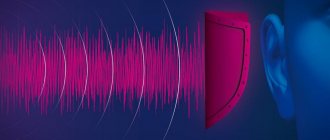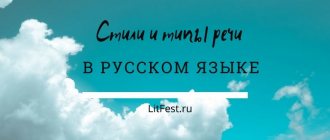Phonetics
Our speech is divided into two large types: oral and written. The first, naturally, appeared long before the second. After all, initially people learned to exchange information using gestures and simple sounds. Then this gradually grew into words that formed one language or another. But soon there was a need to record everything that was said. This is how it arose
In this article we will talk about the features of oral communication. This part of the language is studied by a complex science - phonetics. It deals with the sounds that make up our speech. Each of them has its own characteristics and individual characteristics. Their study is included in sound analysis.
Alphabet
Language is the main invention of mankind. Moreover, for every nation that has created its own language, it is distinguished by the characteristics peculiar to this people. At a certain stage in the development of a community that a particular people uses, there appears a need to record speech sounds combined into words and sentences. This is how writing appeared, and at the same time the alphabet. That is, a set of all the letters used in writing, standing in strict order.
The Russian alphabet has 33 letters and looks like this:
The order of letters in the Russian alphabet
The alphabet is the basis of any language that everyone who studies it needs to know. Is it possible to learn to speak without knowing the alphabet? Certainly. But, in addition to the ability to express your thoughts, you need to learn to write and read. And this is impossible to do without knowing the alphabet.
Today, children have a lot of different aids for learning the alphabet. You can buy special flash cards, magnets, and a small primer that your child can take with him on walks or trips.
In our computerized era, electronic gadgets can also be called upon to help in learning the alphabet. Type letters in text apps and name the sounds that teach them. You can use your imagination and use graphic editors, change fonts and add fills. Create your own alphabet that will be interesting to your child. Then learning will go faster and more efficiently.
INTERESTING: Teachers have come up with a very interesting and exciting way to learn the alphabet. Dedicate each new day in your family to one of the letters of the alphabet. Of course, we shouldn’t forget about the rest. Bake buns in the shape of letters, make letters from plasticine with your child, draw them, assemble them from counting sticks. Be sure to tell about the letter the day is dedicated to and give examples of its use.
Vowels
One of the most important parts of our spoken language is the presence of vowels. They are so named based on their main function - to transmit long-lasting sound with the voice. There are six of them in Russian: A, O, U, Y, I, E.
It must be remembered that the number of letters does not always coincide with the number of sounds. For example, the word “south” has 2 letters, but at the same time 3 sounds: “yuk”. A letter-sound analysis of a word should show what is different from the way we write.
Vowels make up syllables in words. It is by their number that they determine how many parts the word is divided into:
- pal-ka
- there are 2 syllables because it has two vowels; - som -
1 syllable, since there is one vowel.
In addition, you need to know the features of letters such as e, ё, yu, ya. They, unlike all the others, can form two sounds - a vowel in combination with Y:
- Yo (y+o);
- E (y+e);
- Yu (y+y);
- I (y+a).
This phenomenon is observed in cases where the listed sounds are used:
- after soft or hard signs ( pouring, zealous
); - after a vowel ( bigYa, poyas
); - at the beginning of the word ( Yula, El
).
Very often, when performing a sound analysis of a word (the diagram is given below), children make mistakes precisely in parsing these vowels.
All the other characteristics that vowels have are quite simple. Especially those that are studied in the school curriculum. Only two signs are considered: stress or unstress.
Voiceless and voiced consonants in Russian: table
Consonants can be voiced or unvoiced. Voiced sounds are obtained with the participation of the voice in the formation of sound. Whereas in the formation of a dull sound, the voice practically does not play its creative role.
Voiced consonants
are formed by the passage of an air stream through the mouth and vibration of the vocal cords. Thanks to this, consonants such as:
When forming voiceless consonants
the vocal cords remain relaxed. These sounds are:
To make it easy to remember voiceless consonants, remember the expression: STYOPKA DO YOU WANT A CHEEK? - FI! All consonants in these words are voiceless.
If you delete all the vowels from this expression, only voiceless consonants will remain.
Consonants
Before performing a sound analysis, you need to know the features and consonants. There are many more of them than vowels. The Russian language has thirty-seven of them.
Consonants have different characteristics:
- Softness or hardness. Some sounds can be pronounced without softening: sea
(
m
- hard).
Others, on the contrary: measure
(
m
- soft). - Voicedness or deafness. When a sound is pronounced with vibration and voice, it is called voiced. You can put your palm on your larynx and feel it. If vibration is not felt, then it is deaf.
- Pairing. Some consonants have their opposite. Usually in terms of sonority and deafness. For example: v
(sound) -
f
(deaf),
z
(sound) -
s
(deaf). - Some consonants are pronounced as if “in the nose”. They received the corresponding characteristic - nasal.
Stressed and unstressed vowel sounds
- The stressed vowel sound is pronounced with great force and does not undergo changes.
For example : sn e g, st ý l, shk a f
- The unstressed vowel sound is pronounced with little force and undergoes changes.
For example : k O rzina (heard instead of O , sound A ), m E dved (In the first unstressed vowel sound, instead of E , heard I ), pl E cho (vowel sound I is heard instead of E ).
IMPORTANT : Stress is not placed in words with one syllable and in words with the letter E.
Vowels Yotated letters Ya, Yu, E, Yo soften the consonant sound in front of them and create one sound: e → [e] or [i], е → [o], yu → [u], i → [a ].
For example:
- At the beginning of the word: hedgehog [y'ozhik]
- In the middle of the word: shelter [pri y'ut]
- At the end of the word: gun [roug y'o]
Hard and soft vowels have a direct effect on consonants. For example, the consonant letter “P” can be either hard (in the word “package” ) or soft (in the word “cookie” ).
How to perform
Now you can create an algorithm that performs sound analysis of a word. The scheme is simple:
- First, we divide the word into syllables.
- Next, we write the letters that make it up in a column.
- Now for each we select the appropriate sound.
- We characterize each of them according to the characteristics described above.
- We count the number of sounds and letters.
- If their numbers do not match, we explain why this phenomenon occurred.
Let's give an example. Let's take the word "ceiling":
- This word has three syllables: po-to-lok
(3 vowels, therefore the corresponding number of syllables). - The letter P has a sound. It is consonant, pronounced without vibration at the larynx, and therefore dull. It is also hard and has a pair of .
- The letter O has a sound. It is vowel and has no accent.
- The letter T has a sound. It is a consonant and is pronounced unvoiced. It is not softened and therefore hard. In addition, it has a couple in terms of sonority.
- The letter O has a sound. It is vowel and unstressed.
- The letter L stands for sound. It is consonant, has no softening - hard. Pronounced with vibration at the larynx - sonorous. This sound has no pair.
- The letter O has a sound. It is a vowel and, in this case, stressed.
- The letter K stands for sound. A consonant is pronounced like a voiceless consonant, has a pair of voicings, and is hard.
- To summarize: this word has 7 letters and 7 sounds. The number is the same, no linguistic phenomena are observed.
Sound word analysis for preschoolers is much simplified.
Children need to learn that the pronunciation of a word and its spelling are very often different. When learning reading and writing skills, children gain their first understanding of the difference between spoken and written language. Thus, it is enough for the teacher to explain that some letters, like soft and hard signs, have no sounds at all. But there are no words starting with the letter Y in the Russian language.
Sound-letter analysis of a word
There are a huge number of words in the Russian language that are written differently from how they are pronounced.
For example, we say “khArAsho”, but we know that we should write the word “GOOD”.
To learn to understand what sounds words are made of, schools perform a task called phonetic analysis of a word.
Phonetics
is a branch of the science of language that studies the sounds of speech.
Phonetic analysis is the analysis of a word from the point of view of its correct pronunciation.
Phonetic analysis is also called sound-letter analysis, because during analysis, the number of letters, sounds, stress in a word is determined, vowels and consonants are identified, and their classification is carried out.
Thus, phonetic analysis reflects the “sound” of the word, the correct pronunciation, taking into account the established rules and traditions of Russian speech. Sound-letter analysis is aimed at parsing a word into letters and sounds, finding out that the same letters in different positions can mean different sounds.
Children often have difficulty performing phonetic parsing of words. The reasons may be different. But two main ones can be distinguished:
- the child does not have the necessary knowledge and rules of phonetic analysis;
- or his phonemic hearing is poorly developed, i.e. the ability to isolate, reproduce, and distinguish speech sounds.
First you need to clearly understand the difference between letters and sounds.
Sounds are the smallest sound units of speech. We hear and pronounce sounds. During phonetic analysis, sounds are written in square brackets.
Letters are signs to represent sounds in writing. We see and write letters.
Letter-sound analysis of the word “blizzard”
We already know how diverse the Russian language is. The sound analysis in the previous example is quite simple. You just need to correctly characterize each sound. But there are those in which a problematic situation arises. For example, the word “blizzard”. Let's execute it:
- Blizzard
- two vowels, which means 2 syllables (
vyu-ga
). - The letter B has a sound. It is consonant, softened by “b”, paired - voiceless, voiced.
- The letter b has no sound. Its purpose is to demonstrate the softness of the previous sound.
- The letter Yu has two sounds and because it comes after b. Both need to be described. So, this is a consonant that is always soft and voiced, it has no pair. - vowel, has an accent.
- The letter G is a consonant and denotes a hard sound. It has a voiceless pair and is voiced.
- The letter has the same sound. It is vowel and unstressed.
- Let's summarize the analysis: 5 letters and 5 sounds. We observe a phenomenon called “iotated vowel”. In this case, the letter Yu, under the influence of b, split into two sounds.
Consonant letters and sounds, soft and hard: table
Consonants, like vowels, can be either hard or soft. For example, in the word “River” , the letter “R” is soft, and the word “Hand” is hard. In general, several factors influence the softness and hardness of sounds in a word. For example, the location of a sound in a word. The sounds are softened by iota vowels ( "E" , "Yo" , "Yu" and "I" ) and diphthongs that come after consonants. For example:
- "White"
- "Love"
- "Friday"
“I” also softens sounds , and its antipode “Y” , on the contrary, makes the sound hard. The presence of a soft sign at the end of a word plays an important role:
- "Len" and "laziness"
A soft sign can soften the sound, even if it is inside a word:
- "Skates"
The letter “and short” denotes the consonant sound th
The letter “Y” or “I short” is found in almost all Slavic alphabets, as well as in those non-Slavic alphabets that use the Cyrillic alphabet. In the Russian alphabet this letter occupies 11th place. It was formed from the vowel “I” and the voiced consonant “J” .
It is interesting that in the 18th century, when the civil script was introduced (as opposed to the church script), all superscript characters disappeared from it. And the letter “Y” has lost its important part. At the same time, the sound denoted by this letter “did not suffer” from such reforms. to return “Y” to the letter under Peter I. However, it was not returned to the alphabet. This was done only in the 20th century.
Today, more and more philologists classify the sound “Y” as a sonorant consonant. That is, those sounds that are located between vowels and consonants, but still relate to a consonant. In addition, it is always considered soft.
Letters and sounds tape for elementary school
Various manuals help very well in learning the Russian language. One such manual is “The Summer of Letters” . It helps to understand the difference between letters, quickly develop reading skills in children and facilitate phonetic analysis of words.
Although at first glance the “Tape of Letters” contains a minimum of information, this is far from the case. This manual can be used not only at school, but also at home. Parents can independently teach their child literacy using this tool.
a “letter tape” at an office supply store or make it yourself. For example, you can use this diagram.
Scheme "Ribbons of letters"








